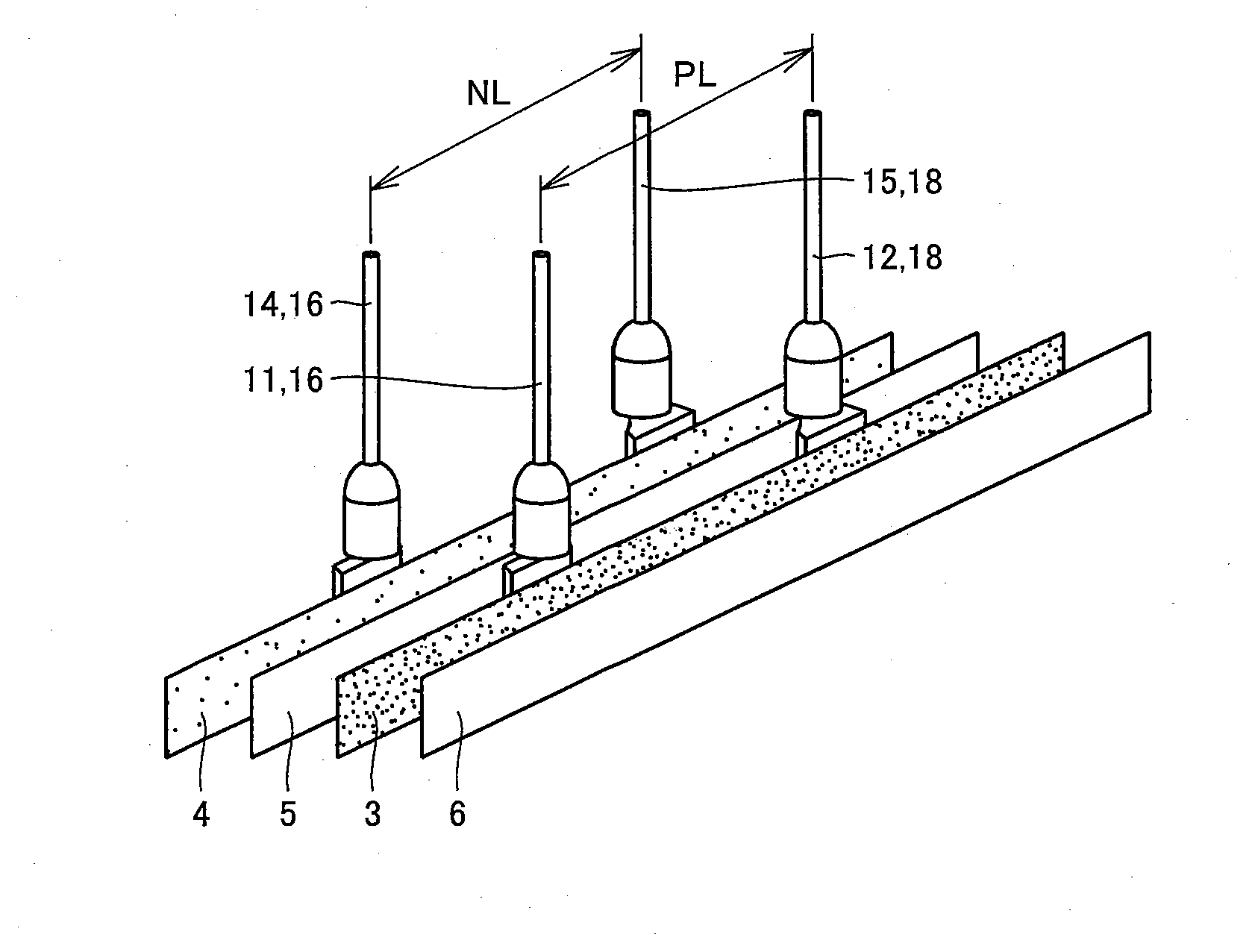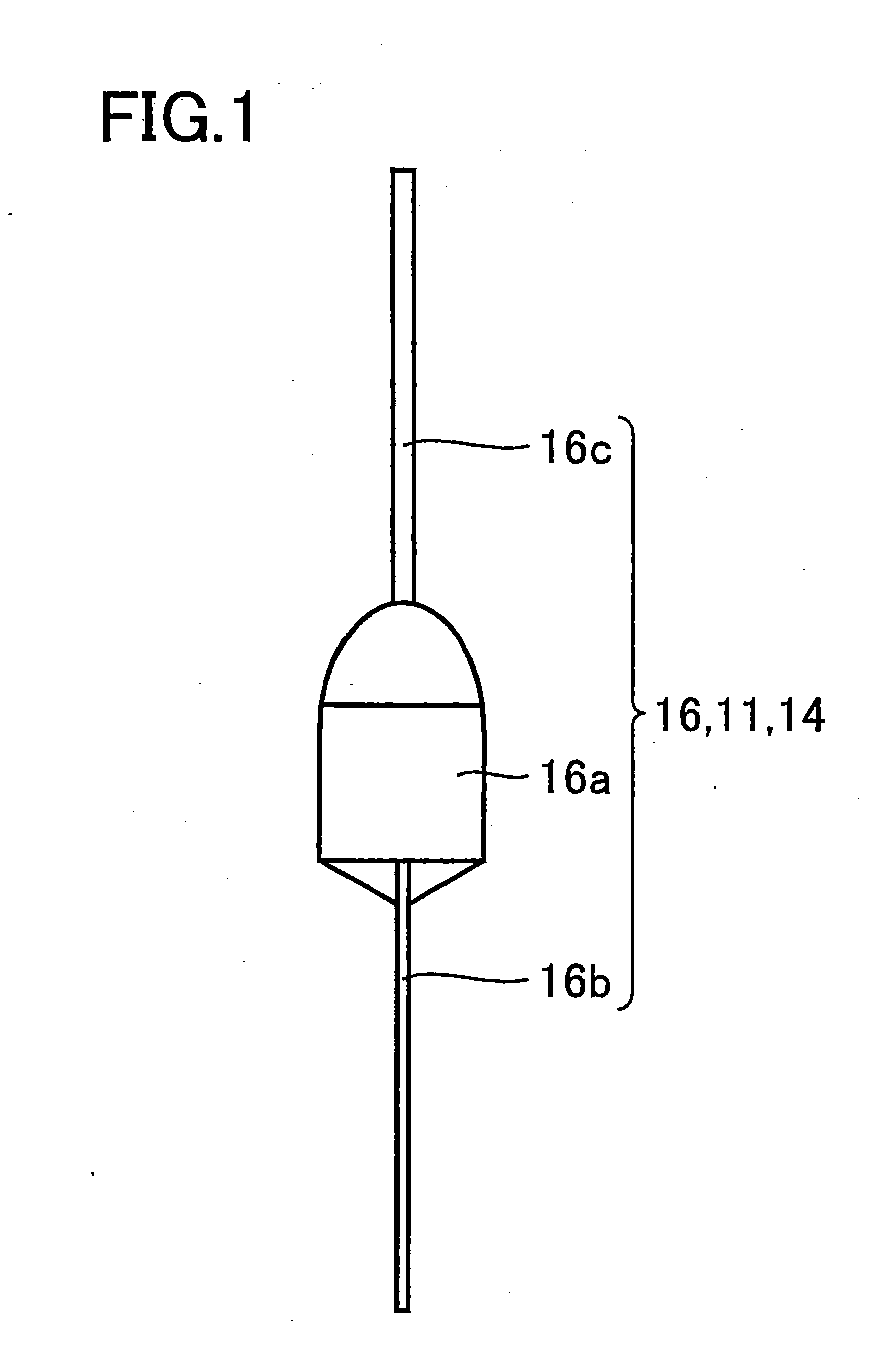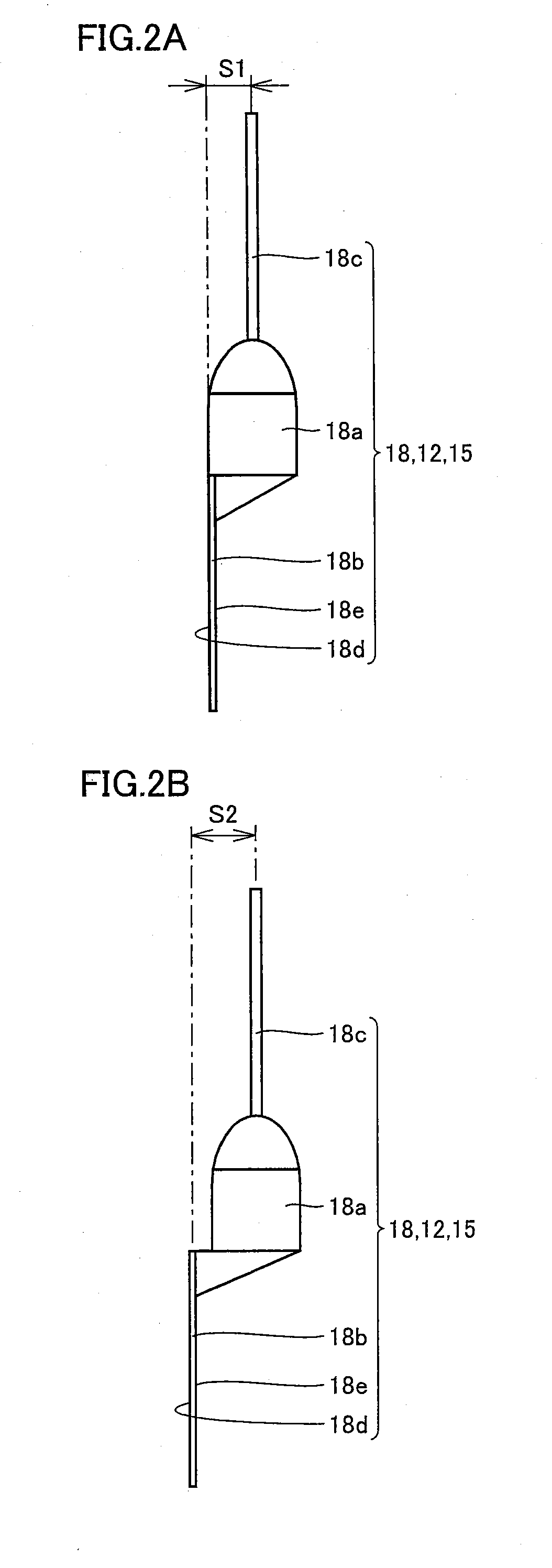Electrolytic capacitor
a technology of electrolytic capacitors and capacitors, applied in the field of electrolytic capacitors, can solve the problems of multi-terminal structure of conventional electrolytic capacitors, and achieve the effects of facilitating registration in manufacturing, and maintaining characteristics of electrolytic capacitors
- Summary
- Abstract
- Description
- Claims
- Application Information
AI Technical Summary
Benefits of technology
Problems solved by technology
Method used
Image
Examples
first embodiment
[0119]Here, an electrolytic capacitor in which a both-side pressed terminal is applied as a first anode (cathode) lead tab terminal and a one-side pressed terminal is applied as a second anode (cathode) lead tab terminal will be described.
[0120]As shown in FIG. 1, a both-side pressed terminal 16 is molded substantially symmetrical with respect to a lead 16c by using two identical molds, and a columnar boss portion 16a, a plate-shaped connection portion 16b connected to an anode (cathode) foil, and columnar lead 16c serving as an anode (cathode) terminal are molded. Lead 16c is provided on one-end side of boss portion 16a, and connection portion 16b is provided on the other end side of boss portion 16a. In FIG. 1, plate-shaped connection portion 16b is arranged in a direction perpendicular to the sheet surface.
[0121]Meanwhile, as shown in FIGS. 2A and 2B, a one-side pressed terminal 18 is molded asymmetrical with respect to lead 16c by mainly using one mold of two identical molds. FI...
second embodiment
[0140]Here, an electrolytic capacitor in which a one-side pressed terminal is applied as the first anode (cathode) lead tab terminal and a both-side pressed terminal is applied as the second anode (cathode) lead tab terminal will be described.
[0141]Initially, as shown in FIG. 13, at prescribed positions in a longitudinal direction of anode foil 3, one-side pressed terminal 18 is connected as first anode lead tab terminal 11 and both-side pressed terminal 16 is connected as second anode lead tab terminal 12. In addition, at prescribed positions in a longitudinal direction of cathode foil 4, one-side pressed terminal 18 is connected as first cathode lead tab terminal 14 and both-side pressed terminal 16 is connected as second cathode lead tab terminal 15.
[0142]Here, as in the electrolytic capacitor described previously, first anode lead tab terminal 11 is connected to a portion of anode foil 3 arranged at a prescribed distance (a first distance) from the one-end side of anode foil 3, ...
example i
[0167]The inventors fabricated 500 electrolytic capacitors in which a both-side pressed terminal was applied as the first anode (cathode) lead tab terminal and a one-side pressed terminal was applied as the second anode (cathode) lead tab terminal (the first embodiment) and 500 electrolytic capacitors in which a one-side pressed terminal was applied as the first anode (cathode) lead tab terminal and a both-side pressed terminal was applied as the second anode (cathode) lead tab terminal (the second embodiment), and evaluated positions of four completed anode (cathode) lead tab terminals (leads) (arrangement geometry).
[0168]It is noted that a specific method of manufacturing an electrolytic capacitor is as described in the first embodiment and the second embodiment above and a diameter was set to 8.0 mm. In addition, 500 electrolytic capacitors in which a both-side pressed terminal was applied as the first (second) anode (cathode) lead tab terminal were fabricated as Comparative Exam...
PUM
 Login to View More
Login to View More Abstract
Description
Claims
Application Information
 Login to View More
Login to View More - R&D
- Intellectual Property
- Life Sciences
- Materials
- Tech Scout
- Unparalleled Data Quality
- Higher Quality Content
- 60% Fewer Hallucinations
Browse by: Latest US Patents, China's latest patents, Technical Efficacy Thesaurus, Application Domain, Technology Topic, Popular Technical Reports.
© 2025 PatSnap. All rights reserved.Legal|Privacy policy|Modern Slavery Act Transparency Statement|Sitemap|About US| Contact US: help@patsnap.com



